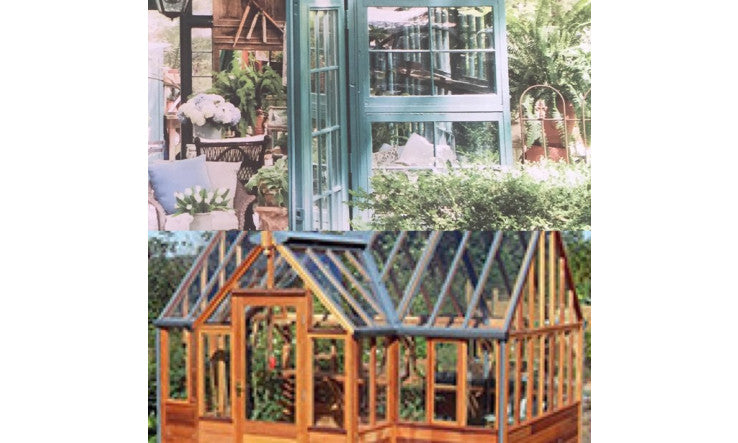Are you thinking about food self-sufficiency? I'm amazed when I read the story of a family who converted their shed into a greenhouse. The parents chose to homeschool their three children to save time and foster experiential learning in an environment that provides for all their needs. And to earn money, this family is planting gardens in their neighborhood!
I also reflect when a permaculturist (self-taught farmer who develops a self-sufficient food forest) comes to my house, looks at the dozens of trees surrounding me and exclaims: "It's a food desert here." During the debates on the creation and preservation of a green belt on the island of Montreal, I heard environmental groups mention that other cities in the country would only have food autonomy for 3 days if we cut off imports.
From then on, I plant to feed myself whether on my balcony or in front of my house (mulberry hedge, kiwi vine, edible flowerbed, herb bed, etc.). And in this dream garden that I design to accommodate children's camps and classes; I dream of a greenhouse where aquaponics rhymes with vegetation, zen and enchanting learning: fish, birds, water, garden surround the children who bring life to life from seeds. They will then plant their shoots to fill the earth which will feed them (or delight in the case of flowers with bees and butterflies), while framing their games, their laughter.
I meet Denis, founder of Shoji Garden: he designs, manufactures and installs four-season cedar garden greenhouses, in which autonomous and integrated aquaponic systems reign.
An electrician, he had a passion for gardening and cabinetmaking. With his wife, they dreamed of winter growing. Attracted by Japanese philosophy, he wandered to Zen garden sites and began building his first greenhouse suitable for four-season use. His first was the size of a shed (10 by 10 feet). His garden fed his family year-round. So it's possible! Even here!
The ecosystem he creates is truly self-sufficient: he can leave for months and the vegetation loses nothing, nourished by the fish's waste! Why not add a bird or two? Balance is achieved again. Isn't it joyful? Denis makes things for his friends, then dreams of bigger things. Today, his greenhouse covers 1,000 square feet, with chickens on the mezzanine! He spends most of his time there, becoming as Zen as the place.
What is aquaponics?
The word aquaponics is a contraction of the words aquaculture (farming fish or other aquatic organisms) and hydroponics (growing plants using water enriched with minerals). It is actually an ecosystem in which three types of living organisms are involved in an ecological cycle. Fish, whose droppings are rich in nitrogen, phosphorus, and potassium, are the source of nutrients for the plants. This system requires no fertilizer, watering, or weeding. Plant maintenance is kept to a minimum. Fruits and vegetables grow faster and can reach 8 times that of soil... with a delicious taste! The choice of fish is between ornamentals (goldfish, koi) or farmed fish (tilapia, perch), which, once mature, can also be used as food (unthinkable for Denis, because his fish come and eat from his hand!).
He chose cedar as the material for his greenhouses. The crops are much larger and more durable than in aluminum greenhouses. There are far fewer temperature fluctuations. Condensation, so often a problem with metal greenhouses, is not a problem here. It is a wood that does not shrink, does not swell, and barely warps, even when subjected to fluctuations in temperature and humidity. In addition, it is virtually rot-proof and has excellent insulating qualities, reducing energy costs in winter. Its pleasant aroma is a natural insect repellent. And a cedar greenhouse becomes the focal point of the garden, much to everyone's delight!
How much does a Shoji greenhouse cost? It's possible to get a 5x7 for less than $3,000, and an aquaponic system starts at $400 (reduce grocery savings to that amount). The idea of sharing this project with neighbors is also incredibly viable, even a solution for the future (whether at the cottage or downtown among the condos; why not next to the rooftop pool?).
Installation takes one day. Denis's system is simple, easy to maintain, and requires little electricity (+/- 100 watts). Everything grows quickly, from tomatoes to peppers, cucumbers, strawberries, and even tubers like carrots, radishes, turnips, etc. Want your own orange, lemon, or banana tree? I'll order the greenhouse for the Garden of Eden and get back to you with news!
Pictured is the color chosen for the greenhouse (from Country Living magazine) and the prototype!




































































Leave a comment